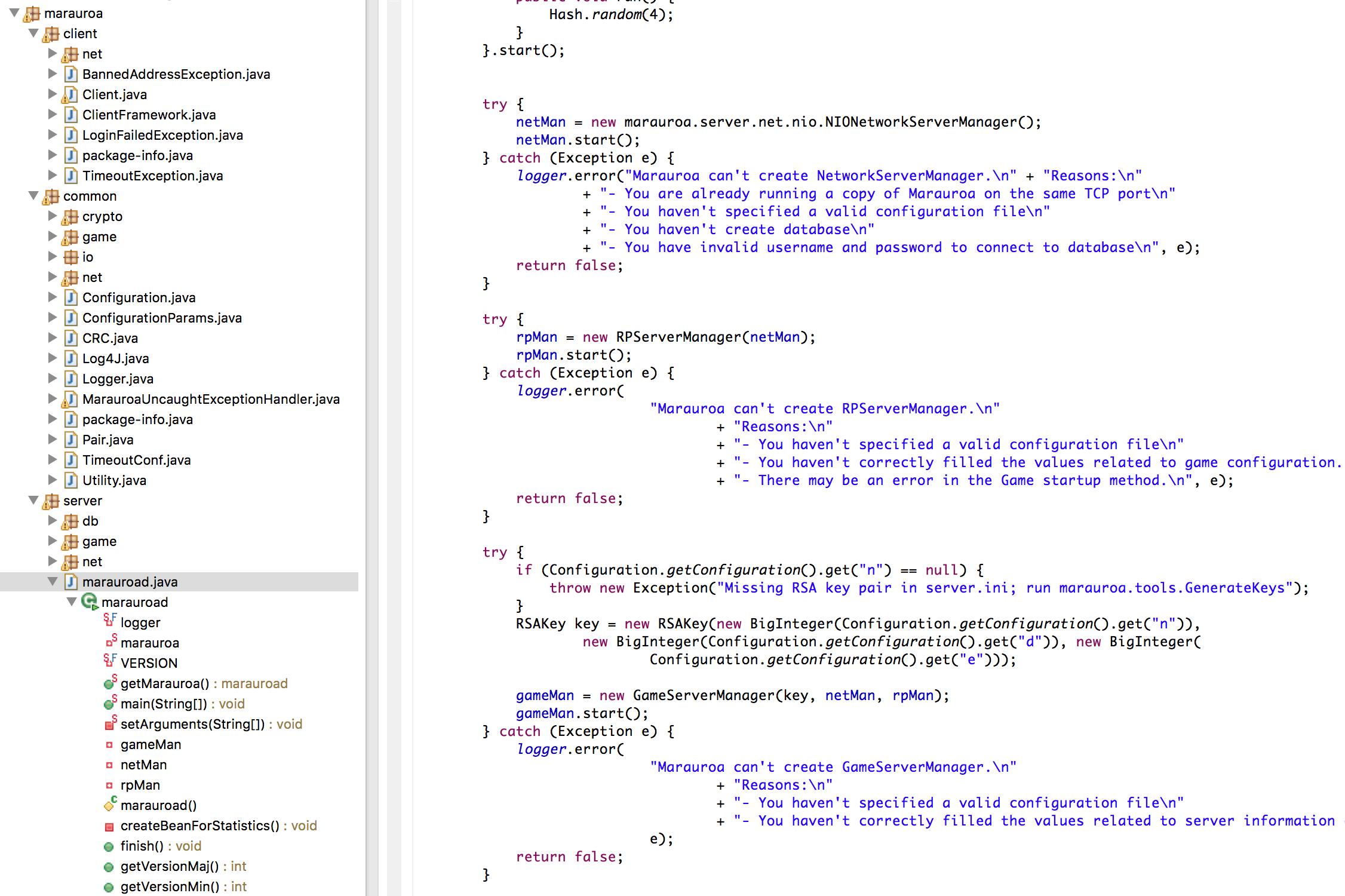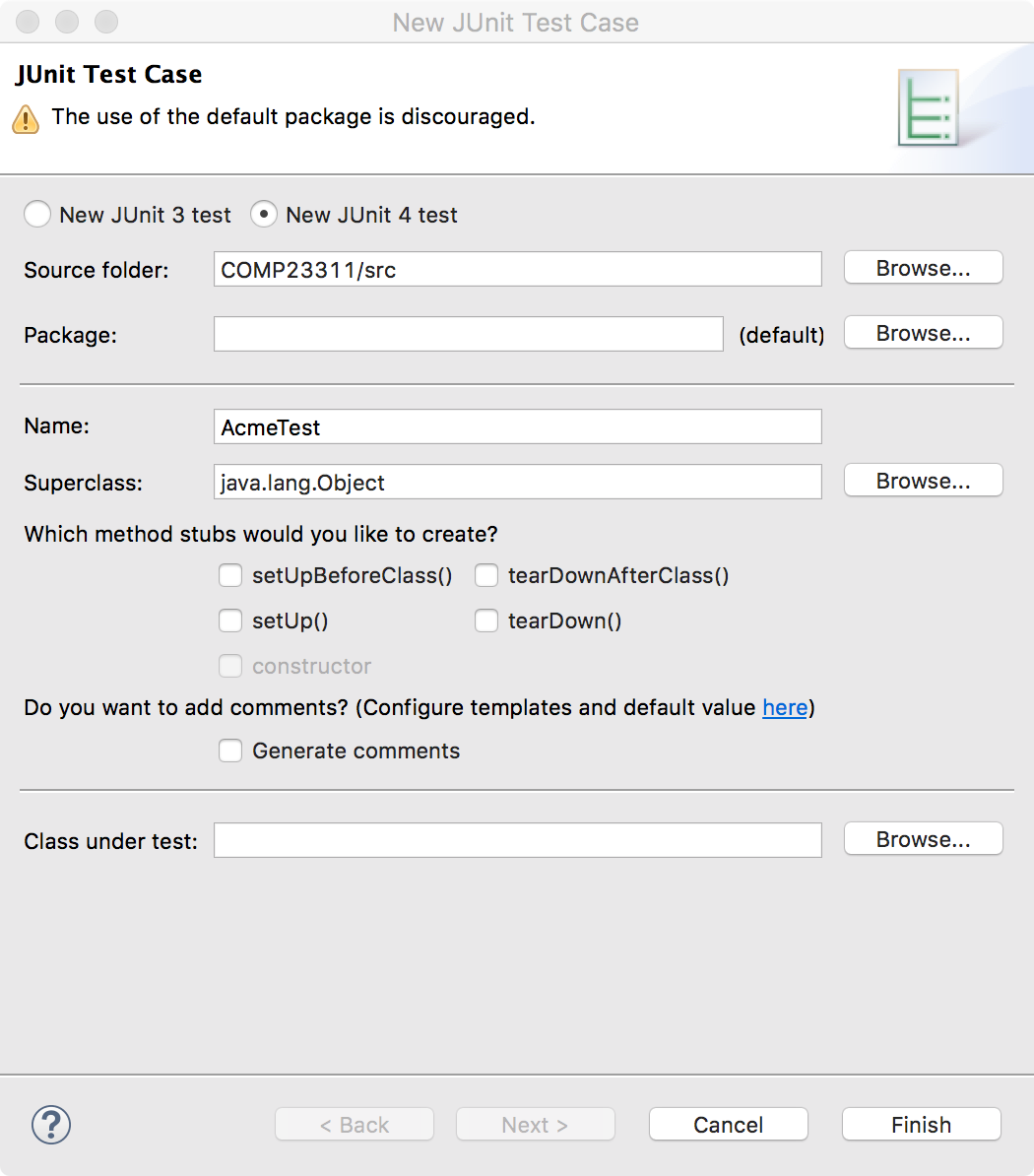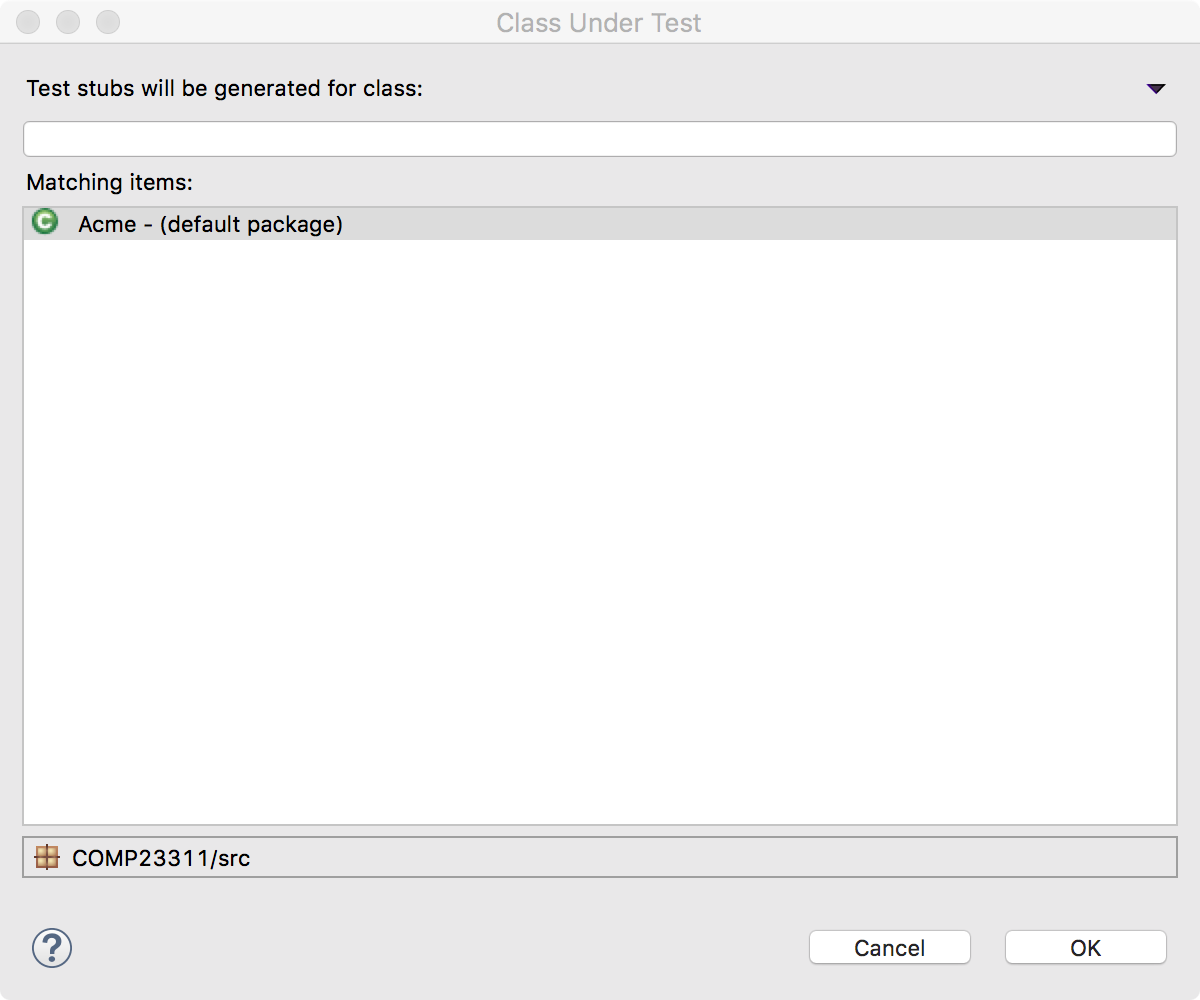2 Large systems
During your summer internship, year-long placement or after you leave University, chances are you will work on LARGE software systems. So it is crucial to be able to understand large software systems. You need to develop strategies for working with unfamiliar and large codebases. The codebase you’re working on here is probably much larger than things you’ve worked with previously, though its relatively small compared to larger well known software projects, see figure 2.1.

Figure 2.1: Like telescopes, software projects can get quite large, so you’ll need to develop strategies for working with large codebases. Telescope Names (xkcd.com/1294) by Randall Munroe is licensed under CC BY-NC 2.5
2.1 Purposes of the workshop
In this workshop, we will look at strategies you can use to better comprehend unfamiliar large codebases. These strategies are supported by code reading techniques (Spinellis 2003) and the functionalities offered by your Integrated Development Environment (IDE). We’ll be assuming that, after this workshop, you will be capable of carrying out the following tasks for yourself, without needing much guidance:
- Navigate large codebases using the most effective strategy for comprehending the code.
- Use the views and functionalities provided by the Eclipse IDE to acquire a better understanding of the code.
- Read and write unit tests to understand the codebase.
In this workshop, you will:
- Use Eclipse to explore the codebase of Marauroa.
- Use the functionalities of Eclipse to carry out top-down reading strategies.
- Build a simple calculator to remove the fear to unit testing.
- Write unit tests to understand different components of Marauroa.
2.2 Learning Large Codebases
2.2.1 What activity takes most of a maintenance programmer’s time?
Having to work with a large unfamiliar codebase is a very common challenge that you will have to face at some points during your career. Hence, developing the required skills to deal with this challenge is imperative. In this course unit so far, you have already faced this challenge (twice!).
Large codebases keep changing all the time. Normally, there are a handful of people working on the same project at the same time. Hence, it’s very difficult for anyone to claim that they have full knowledge of all parts of the codebase. What really matters is to learn how to build a mental model of the large codebase that helps you navigate and find your way around the large codebase you are trying to work with whenever you need.

Figure 2.2: marauroa is a large codbase, how can you find your way around it?
2.2.1.1 Tips for learning large codebases
It can be challenging finding your way around a large codebase that you are new to. Here are some strategies you can apply:
2.2.1.1.1 Tip 1: Develop general knowledge
Develop your general programming knowledge. Most of the large codebases follow similar well-known design patterns. The more you know about these, the easier things will be for you. Does the codebase you are trying to debug use an MVC pattern for instance? if you already know the MVC pattern, your life will be much easier dealing with that codebase.
2.2.1.1.2 Tip 2: Develop domain knowledge
Develop you application domain knowledge. The more you know and understand about the application domain, the better your understanding of the codebase will be.
2.2.1.1.3 Tip 3: Be systematic
Packages and classes are hierarchical! Use systematic reading strategies such as top-down and bottom-up strategies. In top-down, you use the context of the application together with some previous assumptions in order to gain an overall understanding of the codebase. In the bottom-up strategy, you start with individual statements and build up picture incrementally.
2.2.1.1.4 Tip 4: use your IDE
Use the functionalities of the IDE. Different IDEs (such as Eclipse) offer different options that can be very helpful in learning large codebases. On your Eclipse IDE, select an attribute, function or object and with a right mouse click, explore the options you have on the resulting menu.
2.2.1.1.5 Tip 5
Always assume that previous coders were sensible and honest. Every part of the code was written to serve a purpose and it was written in a very logical and methodical way. If you do not understand something, don’t just dismiss it. Of course, there is always the chance that someone made a mistake, but do not rely on that.
2.2.1.1.6 Tip 6: read the tests
Read the Tests! Every large codebase comes with a large test suite that contains hundreds or even thousands of tests. These tests are usually organised in a structure that mimics the source code. These tests are typically a very important resource for learning what various parts of the code are meant to do. Reading through the tests gives you a very good opportunity to understand the expected behaviour of a specific part of the source code, and then try to match that with what the actual code. Even better, if you go ahead and modify some of the tests or even write your own! This will dramatically increase your understanding of the codebase.
2.2.1.1.7 Tip 7: Take your time
Take your time, and don’t hesitate to ask. As we discussed above, large codebases keep changing all the time. Even the most experienced software engineers can’t claim they have detailed knowledge of every single part of the codebase all the time. So, take your time and don’t put a lot of pressure on yourself. Take a breath and work in a logical and a methodical manner. If you ever get stuck, always feel free to ask a more experienced member of your team.
2.2.1.2 Comprehending Marauroa

Figure 2.3: A screenshot from marauroa
Now, using the tips outlined in section 2.2.1.1, try to apply them to improve your understanding of the Marauroa codebase.
Let’s start with the application domain. What do you know about Marauroa’s application domain? By this point you should already know that it is a game engine that is used to develop Massive Multiplayer Online Role-Playing Videogames MMORPGs. How does/did this piece of information helped your understanding of the codebase?
Secondly, in the IDE, follow the gradual expansion of the hierarchy and read package and class names shown in figure 2.2. This gives you a bird’s eye view of the general structure of the codebase. Do you think the names are meaningful? Did that contribute to your understanding of the codebase?
Now try to identify the classes that play a central role. Once you identify a few of those, try to do more digging. Open these classes and skim through them. Check the import clause to see their dependencies. Do you notice anything in common? (Use the Outline view of Eclipse). For instance, check the class marauroad.java within the marauroa.server package. How do you think this approach helps you improve your understanding of the codebase?
Classes can also be read gradually using a top-down strategy. Look at the icons provided by the environment. Do you know what each icon means? Skim through the comments inside the class – use Javadoc. Do you think the comments were useful? Or are they just adding more chaos?
Skim the attributes and methods of the class. You don’t need to understand every word to understand overall meaning. Can you establish any hypotheses about the “marauroad.java” class? which one of the following statements do you agree with:
- It’s a daemon running on the server side.
- It’s a thread that throws 12 threads.
- It follows a singleton pattern.
2.3 Unit Testing Overview
2.3.1 Definition
A unit test is an automated test that quickly verifies a small piece (unit) of code in an isolated manner.
- What is a small piece of code? The convention is that the piece of code under test should be a single class, or a single method inside that class. A common beginner’s mistake is to try to test more than one class at once. In general, you should always strive to keep the guideline of unit testing one class at a time.
- Quickly refers to any amount of time that is acceptable within a given domain (but normally, it should only be fractions of a second). However, as long as the execution time of your complete test suite is good enough for you, it means that your tests are quick enough.
- Isolated manner refers to the fact that unit tests should be written such that they can be run in isolation from each other. This way, unit tests are not dependant on each other, and they can be run in any order at any time.
2.3.2 The AAA pattern: Arrange-Act-Assert
The AAA pattern is a simple and intuitive approach that provides an elegant structure for unit tests. It helps reading and writing unit tests that are easily understandable and maintainable.
-
Arrange: in this section, we set up the objects to be tested (these are usually referred to as the
System Under Test– orSUT). TheSUTis configured to take a specific state, along with any other variables that are required for the test. - Act: this is where you invoke the code (unit) you would like to test. The SUT that has been prepared in the previous section is used to call one of its methods. The output of the method is captured and saved.
- Assert: this is where the output of the action is verified. Based on the arrangement in the first section, the action that was invoked in the second section is expected to produce a specific result or manipulate the state of the SUT in a specific way. In this section, you assert that the result(s) of the action meet the expectation(s).
2.3.3 A simple example
Assume that we have a class called StringUtils which includes a method called reverse that return the reverse of an input string. For instance, if this method receives a string xyz, it should return a string zyx. Now, without knowing the exact implementation of that method, we can write the following unit test using the AAA pattern:
@Test
public void testReverse () {
// Arrange
String input = "abc";
StringUtils sut = new StringUtils(); // sut = system under test
// Act
String result = sut.reverse(input);
// Assert
assertEquals("cba", result);
}It is important to note that you do not need to know the implementation of the method being tested in order to write the required unit tests. As in the example above, all you need to know is the signature (inputs and outputs) of the method and what it is expected to do. In fact, it is encouraged that you write unit tests for methods before you implement them. This way, your tests will not be written for a specific implementation, but rather they will be written based on what the method is supposed to do. This is a common practice referred to as Test-Driven-Development (TDD). (Koskela 2013)
2.3.4 Tips and tricks
Some tips and tricks for test-driven development.
2.3.4.1 Tip 1: Arrange section is largest
The Arrange section should always be the largest of the 3. In this section, all the required variables and objects are created and given the desired state required for the test. Sometimes multiple tests require the same Arrange section. Hence, it’s a common practice to extract the arrange section into a private method(s) inside the test class and then simply call these methods from the arrange section of any test that require them.
String input;
StringUtils sut; // sut = system under test
// this method will be used in the arrange section of the tests
private void initialize(){
input = "abc";
sut = new StringUtils();
}
@Test
public void testReverse () {
// Arrange
initialize(); // everything we need is arranged using this single line
// Act
String result = sut.reverse(input);
// Assert
assertEquals("cba", result);
}2.3.4.2 Tip 2: Act is usually a single line
The Act section should normally be a single line of code that invokes the method being tested. In most cases, if the Act section is more than one line of code, you should immediately think about refactoring the unit test (breaking it down into smaller unit tests). The main reason for this is that, if the test fails, it is usually difficult to tell which part of the act section is responsible for the failure of the test.
2.3.4.3 Tip 3: Order is important
When using the AAA pattern, you do not have to start writing your test code at the beginning: the 3A sections should always come in that order; Arrange > Act > Assert. However, you do not have to start writing them in that order. Sometimes, it makes more sense to start either from the act or the assert section, based on the system and unit you are testing and the way you understand it.
2.3.4.4 Tip 4: Avoid multiple AAA
Avoid multiple Arrange-Act-Assert sections in a single test. In some cases you find a test that repeats each section more than one time. It could look something like this:
Arrange > Act > Assert > ActAgain > AssertSomethingElse > ArrangeAgain > ActOnceMore > Assert
If you are struggling to understand the previous line, imagine trying to understand the code in the test that actually follows that pattern! If a test contains more than one Act sections mixed with multiple Assert and/or Arrange sections, it means that the test is trying to verify more than one unit of code. This indicates that the test is no longer a unit test, but rather an integration test, since it tries to verify the interaction of more than one units of code.
If you ever come across a test that contains multiple Act-Assert sections, it is always a good idea to think about refactoring it by breaking it into more than one test, each with one Act and Assert sections.
2.3.4.5 Tip 5: Avoid if statements in tests
Avoid using if statements in unit tests. Unit test with conditional statements are difficult to read and understand. A unit test is supposed to be a simple sequence of instructions that contains no branching. if statements in unit tests should also make you think about refactoring, i.e breaking the test into more than one test each of which verifies the outcomes of one of the branches in the original test.
2.3.5 Building a simple application with simple tests
Let’s put the knowledge you have gained so far into practice. you will build a class with two methods and then write some unit tests to check that all is working as expected. Follow these steps:
- Create a new project:
File>New>Java Project(in our example, we have called the projectCOMP23311) - The
srcsource folder has been created by default. Create another source folder by right-clicking on the root element of the hierarchy:New>Source Folder. - One of the folders will contain the code under test, while the other one while have the tests.
- On the code under test folder, create a class
New>Class(our example calles this classAcme) with two methods:- One which returns the sum of two integers.
IN: 5,3; OUT: 8 - One which takes two strings and returns a string which is the product of concatenating them.
IN: aab, bbc; OUT: aabbbc;IN: abc, xyz; OUT: abcxyz
- One which returns the sum of two integers.
- Create the Test case by right clicking on the project,
Newand then selectJUnit Test Case. - Now we are going to fill out some fields of the New JUnit Test Case dialogue menu.
- Name. As a convention for naming test classes, you have to append Test to the code under test class name, see figure 2.4
-
Class under test. You can specify which is the class under test in the last field of the dialogue menu. Click
Browse...see figure 2.5 - A dialogue will ask about whether you want to include the JUnit libraries. Say
Yesto this. - Click on Finish.
- You now need to create methods which test the code you have written. You ultimately have to think to yourself “How can I know that this code is functioning correctly? What behaviour will I look for to tell me this? Can I trip-up the code in any way, therefore telling me that it isnt working properly?”
- You could test many things:
- On the sum method, check whether the output is
8when the inputs are3and5 - On the string concatenation method, check the output is
aabbbcwhen the inputs areaabandbbc - On the string concatenation method, check the output is
35when the inputs are3and5 - etc.
- On the sum method, check whether the output is
- Some hints to create the tests:
- Use
@Testto indicate a method is a test -
assertEquals(String message, expected, actual)tests if two values are equal.
- Use

Figure 2.4: JUnit Test Case, with Test appended to the Acme class

Figure 2.5: The Class Under Test in this example is Acme
A possible solution to the above exercise will be discussed during the workshop and it will be published in Blackboard by the end of week 2.
2.4 Unit Testing Reading and Writing in Marauroa and Stendhal
Here are four exercises to understand Marauroa better through the use of tests. Worlds, zones and objects are fundamental concepts in many videogames. Therefore, Marauroa provides some classes to facilitate the development of such concepts. The classes we are going to deal with can be found in:
- Object:
Java marauroa.common.game.RPObject - Zone:
marauroa.server.game.rp.MarauroaRPZone - World:
marauroa.server.game.rp.RPWorld
We will create a new JUnit Test Case for the following four exercises. Based on what we discussed today think about what would be its best location under the tests package.
2.4.1 Exercise 1: There is only one instance of World
The strategy here should be to:
- Get two instances of the
Worldclass - Use a JUnit a statement to compare whether the two variables refer to the same object.
2.4.2 Exercise 2: Zones are actually added to Worlds
- Get an instance of the
World - Create a new
Zone - Add the new
Zoneto theWorld - Use a method from the
Worldclass to check if ourZonebelongs to theWorld - Use a JUnit a statement to check the above
2.4.3 Exercise 3: Objects are actually added to Zones
- Create a
Zoneand create anObject - Set an identifier to the
Object. Tip: theZonesclass has a method for that. - Add the object to
Zone - Use a method from the
Zoneclass to check if ourObjectbelongs to theZone. - Use a JUnit a statement to check the above
2.4.4 Exercise 4: Objects are destroyed when removed from Zones
- Same as in Exercise 3 until step 3.
- Remove the object from zone
- Use a method from the
Zoneclass to check if ourObjectbelongs to theZone. Use a JUnit statement.
2.4.5 Exercise 5: Reading and refactoring Stendhal tests
Note: this task is not part of your team coursework and you are not expected to commit or push the results of this task as part of your current coursework.
- In Stendhal codebase, use the tips from the previous section to find tests for Quests.
- Skim the tests to identify those that follow the AAA pattern and and those that do not.
- Find and skim the largest test method in this class. What do you think of the approach used to write this test. How many act sections are there in this test.
- Try to refactor this test to make it more readable and understandable?
Solutions to the above exercises will be discussed during the workshop and will be published on Blackboard by the end of week 2.
2.5 JUnit Cheatsheet
A cheatsheet for JUnit:
2.5.1 JUnit annotations
Identifies a method as a test method.
Fails if the method does not throw the named exception.
Fails if the method takes longer than 100 milliseconds.
This method is executed before each test. It is used to prepare the test environment (e.g., read input data, initialize the class).
This method is executed after each test. It is used to cleanup the test environment (e.g., delete temporary data, restore defaults). It can also save memory by cleaning up expensive memory structures.
This method is executed once, before all tests start. It is used to perform time intensive activities, for example, to connect to a database.
This method is executed once, after all tests have finished. It is used to perform clean-up activities, for example, to disconnect from a database.
2.5.2 JUnit statements
Let the method fail. Might be used to check that a certain part of the code is not reached or to have a failing test before the test code is implemented.
Checks that the boolean condition is true.
Checks that the boolean condition is false.
Tests that two values are the same. Note: for arrays the reference is checked not the content of the arrays.
Test that float or double values match. The tolerance is the number of decimals that must be the same.
Checks that the object is null.
Checks that the object is not null.
Checks that both variables refer to the same object.
Checks that both variables refer to different objects.